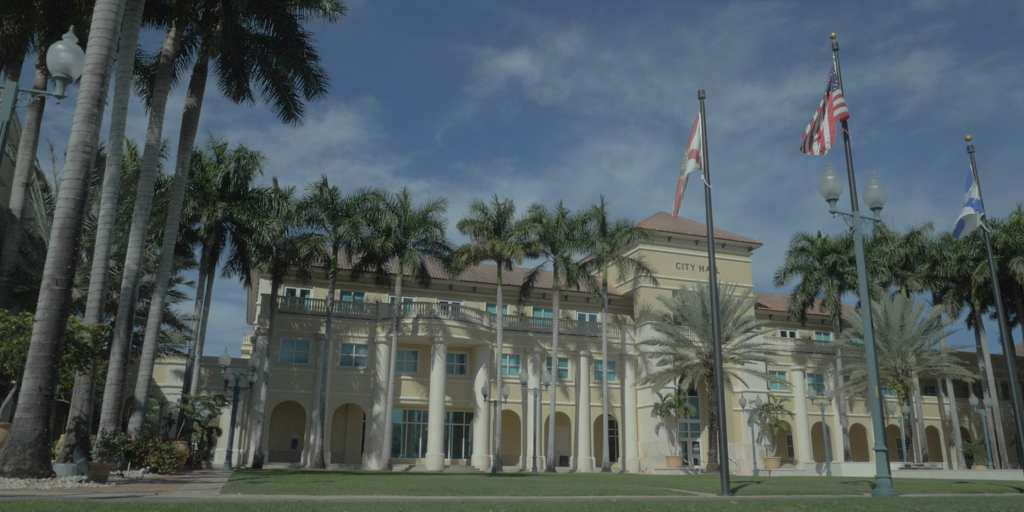Making responsibility count: Inside the City of Miramar’s innovative C.A.R.E. program
Taxes are one of the key reasons many people first choose to move to Florida. The lack of a state income tax, moderate sales taxes and business taxes, and state-wide property taxes below the national average are all attractive reasons to call Florida home. At the same time, however, taxes in South Florida—particularly property taxes—are often considerably higher than locations elsewhere in the state. In Broward County alone, the median property tax bill comes in around $2664.00 based on a $250,000 median home value. That’s more than 60 percent the state median of $1773.00 for a similarly valued home in other Florida communities.
Those extra taxes go a long way towards making South Florida the most desirable destination in the state, but it also means there’s not much room for cities and municipalities to increase taxes further to compensate for inflation, rising costs or instituting new programs. The City of Miramar, however, has found a solution by approaching these challenges from a new angle—the city’s new Comprehensive Assessment of Revenues and Expenses (C.A.R.E) program. Rather than raise taxes on property, introduce an increase in sales tax or pursue other means of revenue that negatively impact residents, the C.A.R.E. program seeks to recapture revenue, optimize budgets and minimize unnecessary expenses or waste through employee involvement, analysis and execution.
“Serving the community well and what it costs to provide those services has always been a delicate balance,” said Vernon E. Hargray, city manager for the City of Miramar, and one of the lead public officials behind the C.A.R.E. program. “We must always recognize that our residents have entrusted us with significant portions of their income in exchange for maintaining an excellent quality of life. That is ultimately how we add value to those who live, work, and play in Miramar.”
The beginnings of C.A.R.E
In 2018, Hargray identified a number of needs that would need to be addressed if Miramar were to continue a trajectory of positive growth and advance its position as a major South Florida city. Among these needs were enhanced work environments for employees, improved and expanded best practices for government administration, optimizing the city’s human and financial capital, and additional quality of life benefits for the community at large.
“Many cities struggle with exactly these same needs,” Hargray said. “Often, the decision is to put together a task force to address one issue at a time. It’s a good enough approach, but I felt strongly we needed something more holistic if we wanted it to be not only effective but also sustainable for years to come.”
At the foundation of the program, Hargray identified four pillars for measuring success:
1) The new program must ensure crucial identified needs were met.
2) The program should also be used to identify areas of inefficiencies within the city.
3) Inefficiencies must then be addressed and corrected to eliminate waste and better use resources.
4) With the city running in an optimized manner, the program should create opportunities for financial savings and revenue generation.
How C.A.R.E. Works
To make C.A.R.E. a reality, Hargray sought out Kelvin L. Baker Sr., ICMA-CM and assistant city manager. “The C.A.R.E. Program is an internationally proven program that includes strategic planning, goalsetting and implementation of viable ideas while empowering all employees, residents, and the business community to participate in the innovative advancement of the city,” Hargray said. “Mr. Baker’s experience and knowledge in running a program of this scope and size is how C.A.R.E. was able to deliver abundant financial gains, advancements for the business community, enhanced employee relations and interactions, and leadership development opportunities in city government so quickly since the program was launched in November 2018.”
Baker’s approach was simple, direct, and actionable—create a program that is employee-driven to encourage participation, teach accountability and responsiveness, and instill leadership across all levels. The C.A.R.E program starts with employee participation with full support from the city manager. This module allows employees to see their positive work impact in their area as well as other areas of the city. It also allows employees to engage in outside-the-box thinking in areas outside of their daily departmental roles. To initiate the process, employees make fill out suggestion forms/cards and submits to the C.A.R.E. department. Once received, the C.A.R.E. department filters them based on category. These include:
- Workplace efficiency
- Expenditures
• Revenues
• Public/private partnerships
• Grant programs
• Reserves
• Volunteer programs - Energy policy
• Conservation policy
• Capital improvement plan
Each category is overseen by a committee made up of staff members from different departments. Disciplines such as practice leadership, engagement, decision-making, teamwork and more are built into the submission process, during which time committees receive, review, vote, process and implement recommendations deemed viable, upon prior approval by the city manager.
The beauty of the C.A.R.E. program is that it allows individual employees to contribute suggestions and ideas to those areas in which they have the most interest, expertise or connections to facilitate change. “Having multiple different categories under the C.A.R.E. umbrella also allows us to be responsive to new or emerging needs and opportunities as they occur,” Baker said. “For instance, we may not need to make capital improvements every year. Or, we may be approached by an organization hoping to expand solar power. We cannot predict when or where future needs may happen, but with C.A.R.E. we have the framework for addressing them in a timely manner.”
Results
The outcome to the program thus far has proven successful; not only in accomplishments of city objectives but in employee relations as well. With staff collaborating beyond their respective departments, engagement is a natural by-product of the program. So too, are positive outcomes.
With more than 1,100 suggestions received between Nov. 30, 2018, and July 2020, when data tabulation was temporarily paused due to COVID-19 concerns, the C.A.R.E. program’s successes included:
- Increased the number of suggestions implemented via work orders (from 0 to 58)
- Implemented suggestions approved by the city manager and completed via work orders
- Negotiated $36 million (over 20 years) of Billboards revenue
- Negotiated $48,000 for the term of the two-year agreement in valet parking and event management services revenue
- Raised $85,000 of savings from the utility bill audit
- Created $51,000 in estimated savings from an energy audit
- Discovered $13,000 of savings form stranded assets
- Produced $720,900 of four quarter savings from our investment policy
- Established $39,000 savings/per month and 80 participating vendors from our P-card policy
- Collected $38,152 in reimbursements from contractors
- Improved our cell phone stipend program
- Negotiated an estimated $47,250 city savings and employee benefit, with a 20 percent to 25 percent hotel discount (for city travel and city employees personal use)
- Created a potential revenue of $17,000 from with MOU with Kohl’s Department Store
- Current reserve total of $20,000 via a Reserves policy creation and use
- Upgraded the quality of life for our residents
- Implemented the city manager’s quarterly video
- Saved $10,565 with double-sided default printing
- Saved $10,404 with computer hibernation policy
- Improved our energy usage by installing LED street lights
- Creating $45,000 estimated revenue from solar-powered trash and recycling bins
- Improved the quality of life of employees with HR implemented programs
- Work-from-home opportunities (fast-tracked by the COVID-19 virus)
- Established a $160,992 annual savings with an anti-idling policy
- Created additional opportunities for revenue increases
- $20,000 potential annual revenue for a water trailer
- $130,838 potential 10-year savings for fleet electrification
- Near completed projects and programs
- Working on a $300,000 grant with FPL for level-1 (best) chargers, revenue-based project. Waiting for the grant award decision (revenue-based).
- Working with FPL on free level-2 units installation (cost-saving $8,000 per unit).
- Installation of revenue-based level-2 chargers (revenue not estimated).
- Potential savings $130,838 for fleet electrification (eight electric vehicles pilot).
- $5,000 received with an estimated revenue of $75,000 annually (for five years) from bus bench ads.
- Generated $457,146 in C.A.R.E. grants during the first year (city total $8,111,366)
- $404,543 current grants awarded
- Established two public-private partnerships (Marriott and Kohl’s)
- Additional programs started, created or implemented due to association with the original suggestions
- T-Mobile cell phone discount with payroll deduction for all City of Miramar employees
- Contract Management [in the RFP process]
- T-Mobile Connecting Heroes’ program (early stage)
“It’s not often that a city gets to say they’ve cut costs and improved the value we deliver to all it serves…but that’s precisely what C.A.R.E. has done for the City of Miramar,” Hargray said. “As we continue to identify other areas of revenue generation and growth through the C.A.R.E program, we welcome communications with other municipalities to learn how they may experience the same savings, over time, by undertaking similar programs best suited for their needs. Because C.A.R.E. has worked so well for us, we are eager to share it with others.”
T.C. Adderly is the C.A.R.E. manager for the office of the city manager, City of Miramar.




















